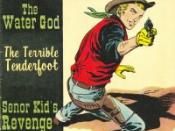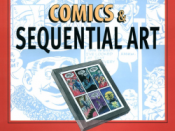In order to understand the world comices, you must not simply picture the comic book.
You must define the terminology. A comic book artist named will Eisner used the term sequential art when he described comics. It is when pictures have been taken individually, then put in a sequence. But when this happens, the image is transformed into even something better: The art of comics." But to get a better understanding of comics, you would have to take it apart. The artform medium is called so by people in the comic business, the vessel. But the content in comics can be different from your standards of taste. "But the trick is to not mista ke the message for the messenger." Suppose someone kills another person in a book and it takes place in a western comic book. He is not sayhing to go out and become a cowboy and shoot someone.
He is simply an exciting fictional book for a person's amusement.
Eisner's definition of comics is sequential art, yet it is more than sequential art. There are a lot of different types of art. The term sequential art can not do for comics. People think that comics are animation. These people arte wrong. They are wrong for two reasons and one reason alone. When you see a movie on the screen that is animation, each frame of the movie is played in the same spot on the screen. Comics are images in different boxes and time has a difference. While images in movies are shown in the same box, they are also constantly moving through time. While comics move speratically, "Juxtaposed as comics are," it is juxtaposed, pietorial, and other images in deliberate sequence. A comic does not have to contain words. "So the definition of comics in plural...


